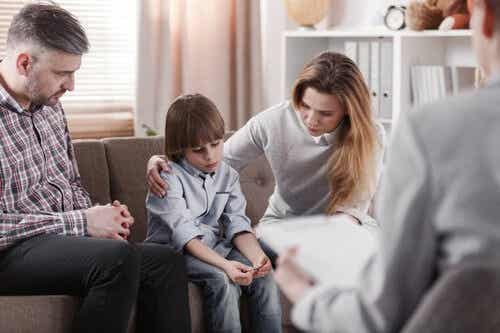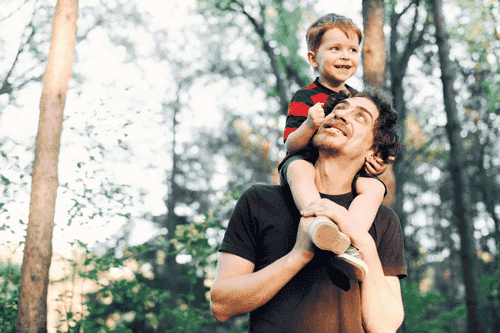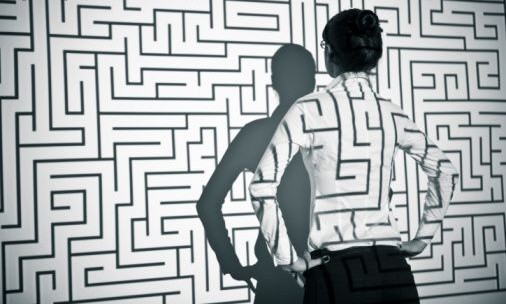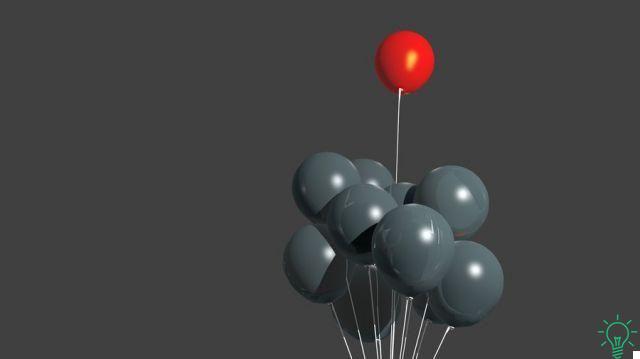The behavior of children and adolescents reveals a lot about relationships and family and social dynamics. For this reason, in the presence of dysfunctional behaviors, the best thing to do is to rely on psychotherapy.

Last update: October 08, 2022
The number of children and adolescents in therapy has increased in recent years in an attempt to explain dysfunctional behaviors. The cause of these behaviors has been identified in aspects of a social nature.
The context in which these factors are immersed becomes a sort of storehouse of meanings for explain the less harmless behaviors, but also the more serious situations.
From social to family chaos
Primary and secondary schooling they witness an increase in aggressive and violent attitudes among pupils. However, it would be simplistic to limit violence to the school context only.
We should therefore ask ourselves: how could there not be violence in schools if in different social contexts aggression is a constant? Football fields, road accidents, corruption at various levels, street thefts with aggravating violence, robberies and raids. These are the scenarios in which young people grow up.
At work there is a climate of instability that leads to the abuse of power and mistreatment, which is why the current economic system has created a population of unemployed and maladjusted, poor and very poor; moreover, of poor people filled with anger and resentment.
As if that weren't enough, television proliferates with programs that stupefy by broadcasting wars between show girls or scoundrels.
If society, which should offer young people models to identify with, with which to discern between right and wrong, instead offers stupidity, corruption and violence as a point of reference, what image does it really show?
The threatening crisis that becomes a daily reality leaves crudely unexpected problems and conflicts that grow stronger: families in crisis who transmit a dose of neurosis to other members. Dysfunctionality no longer just haunts us, it attacks us.
Dysfunctional behaviors in the family
The family is part of the social context in which it is immersed; it is therefore inevitable that to varying degrees it reproduces within it the positive aspects and contradictions of the society to which it belongs.
We currently live in a family climate that follows the social one. People live under the excessive pressure of a work environment that subjects them to a perennial downgrade: we are all replaceable.
Inside the house, many couples barely communicate, they limit themselves to the superfluous: bills, small daily calculations and scarce insights and reflections on life, issues that do not endanger the peremptory stability and do not put them in front of a further cause of chaos, or separation. .
Ma the feeling of helplessness produced by this lifestyle is a threat which is expressed with aggressive responses that suddenly become magnified with the famous "avalanche effect".
The climate of constant tension, added to bursts of aggression, contributes to fueling an atmosphere that feeds reproaches, low self-esteem, powerlessness in every aspect.
The dysfunctional behaviors of children
Parents become less tolerant of requests. The claim, with few spaces to argue, increases the disagreements. But the climate of tension in the couple goes beyond this boundary, the parents begin to involve their children in the conflictual circuit.
The children enter the dispute, siding with one or the other parent. If they stand up for the father, they feel anger at the mother's actions, but at the same time they feel guilty and vice versa. Guilt and anger contribute to the climate of family disorder.
In a short time, the communication complexity becomes complicated. The feelings of the children are reflected in other contexts, that is, they begin to exhibit dysfunctional behaviors in their second home: the school.
Communication in the family and at school
Right at school the child or young person reproduces the communicative style acquired in the family, at the same time it pours out the unbearable accumulation of anguish which pervades it.
It is enough for him to repeat some violent actions to be labeled as "the violent" of the class. And it is likely that upon the occurrence of this circumstance, you will begin to show learning disabilities.
In a short time he transforms himself into the exhalation goat and the object of mockery of his companions; this makes him feel marginalized and, therefore, he reacts violently, thus confirming his role as "violent".
Following teachers' summons, notes of conduct and admonitions, parents focus on their child, resorting to prizes and punishments, which are usually ineffective.
The boy is not only problematic at school, but also at home, yet no one had noticed. He somehow managed to release his anguish, to get noticed by his parents and thus distract them from the discussions that threatened to separate.
These actions are intertwined in an infinite circle, which if not stopped in time causes chaos and despair, one of the roads that feed mental disorders.
Go to therapy to stem the situation in time
In part thanks to the demystification of the association between insanity and psychotherapy, parents resort to psychotherapy expecting regression and solution to the dysfunctional behaviors of their children.
Some therapists choose to proceed with parenting interviews and individual sessions with the child. During these sessions, for example with children aged 4 or 5, the so-called "play time" is applied, in which through the playful aspect the conflicting signals will be expressed and decoded.
But the symptoms shown by the child / adolescent can be a consequence of parents in constant quarrel, intolerance towards the idea of a separation, experiences of separation or breakup of the family, etc. It is necessary to know how to read the message contained in the symptom.
Here family therapy becomes indispensable, with a group interview and the analysis of the consequent symptomatic behaviors of the children.
Conclusions on dysfunctional behaviors in boys
Whatever psychotherapeutic approach adopted, it will have to offer young people the tools and resources needed to combat dysfunctionality.
Parents will have to be informed of the situation and will have to take responsibility for the child's problem. Otherwise, the desired results will not be obtained, on the contrary, the malaise will be fed.
Psychotherapy is by definition a space for reflection and learning. A place that orders and corrects the deviations that destabilize well-being, such as dysfunctionality. In a context of generalized malaise, of incessant anguish, of uncertainty and anxiety, of stability and instability, what could be better than seeing a child who regains his smile!


























